If you are a beginner tattoo artist, you may be wondering “what to practice tattoos on?” Practicing is a crucial part of becoming a successful tattoo artist, but it can be difficult to find a suitable surface. This article provides tips for beginner tattoo artists on what to practice tattoos on, to help you hone your skills and become a professional.
Contents
Types of Practice Tattoos
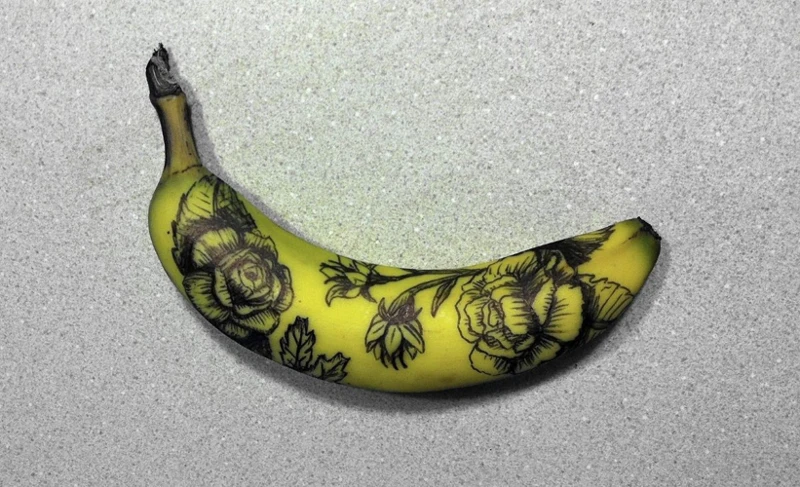
The most common type of practice tattoo is a stencil-based tattoo. This involves creating a design on paper, then transferring the design onto a skin-like surface. The design can then be inked onto the surface with a tattooing machine. This is an ideal way for aspiring tattoo artists to get familiar with a tattoo machine and how to use it.
Another popular type of practice tattoo is freehand tattooing. This is when an artist creates a design directly onto their practice piece without the use of a stencil. This is a good way to practice shading, line work and other artistic techniques used in tattooing.
Finally, a tattoo gun set is a great way to practice tattooing. This set contains a tattoo machine and a variety of needles, inks, and other supplies. This is a great way for beginners to learn the basics of tattooing and to get comfortable with a tattoo machine.
No matter what type of practice tattoo you choose, it is important to use a practice piece that is similar to real skin. This will help ensure you get a realistic look and feel when practicing. There are many types of practice skin available, so make sure you choose one that is closest to real skin.
By using the right type of practice tattoo, you can perfect your skills and become a successful tattoo artist. What do tattoo artists practice on? With the right practice pieces and tools, you can make sure you’re ready to take on real clients.
Pig Skin
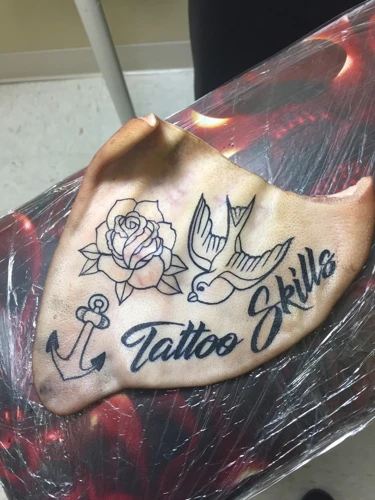
Pig skin is a popular choice for beginner tattoo artists who want to practice their art. It has several advantages such as:
- Realistic Skin Texture – Pig skin has a realistic surface and thickness which allows tattoo artists to practice their techniques as if they are working on a human.
- Easy to Obtain – Pig skin is relatively easy to obtain and can be purchased from most butcher shops or meat processing plants.
- Durable – Pig skin is very durable and will last for a long time, so you can practice on it multiple times without having to replace it.
Pig skin is also a great choice for practicing tattooing because it is much less expensive than human skin. With pig skin, you can save money by practicing on something that’s more affordable, so you don’t have to worry about breaking the bank. Pig skin is also much easier to work with than human skin, so it’s easier for beginners to execute their designs with precision.
If you’re looking for a great material to practice tattooing on, pig skin is a great option. It has a realistic texture and thickness, it’s durable and affordable, and it’s easy to work with. With pig skin, you can practice your art until you’re confident enough to work on human skin.
Fruit
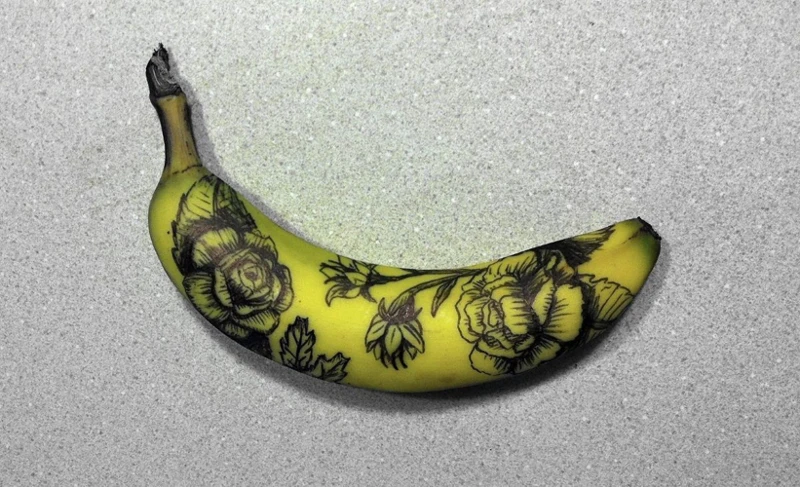
Tattooing on fruit is a great way for beginner tattoo artists to practice their skills. Fruit provides an ideal canvas for tattooing due to its soft, pliable surface, making it easier to learn how to control the needle. Popular fruits to use for tattoo practice include apples, oranges, and pears. To ensure the fruit is as sterile as possible, be sure to always wash it thoroughly before beginning the tattoo. It is also important to remember that since the skin of the fruit is so delicate, it is best to use a lighter hand when tattooing on it. This will allow you to practice your design and technique without damaging the fruit. Once you have finished your tattoo, the fruit can simply be thrown away.
Faux Skin
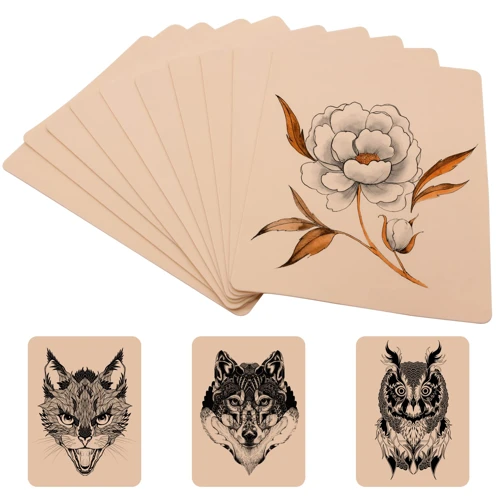
| Pros | Cons |
|---|---|
| Easy to use and learn | Can be expensive |
| Lasts longer than other alternatives | Not as realistic as other options |
| Allows for practicing of different techniques | Can be difficult to get rid of ink residue |
Faux skin is a synthetic material used as an alternative to practicing on real skin. It is designed to be a realistic representation and can be a great way for beginner tattoo artists to practice their skills. It is easy to use and learn, and can last longer than other alternatives. Additionally, it allows for practicing of different techniques. However, it can be expensive and not as realistic as other options, and it can be difficult to get rid of ink residue.
Practice Tattoo Supplies
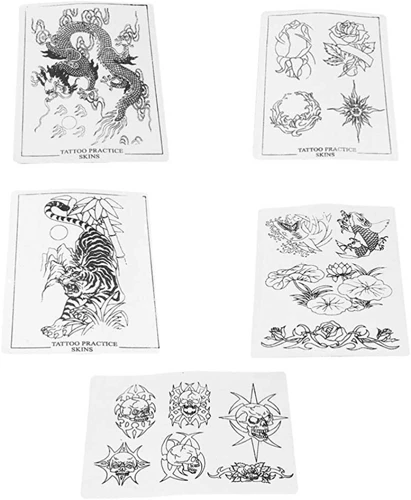
| Supplies | Description |
|---|---|
| Practice Skin | Practice skin is a realistic material that mimics the feel, texture and elasticity of actual skin. It is a must-have for any beginner tattoo artist who wants to practice their techniques and skills. |
| Tattoo Machines | Tattoo machines are the tools of the trade for any tattoo artist. Beginner artists should invest in quality machines that are reliable and easy to use. |
| Inks & Dyes | Inks and dyes are essential for creating tattoos. Beginner tattoo artists should make sure to buy quality inks and dyes that have been tested for safety. |
| Needles & Tubes | Needles and tubes are used to create the lines and shading of a tattoo. Beginner artists should purchase needles and tubes that are of high quality and specifically designed for tattooing. |
| Transfer Paper | Transfer paper is used to transfer a design onto the skin. Beginner tattoo artists should purchase quality transfer paper that will ensure a clean and accurate transfer. |
Practice tattoo supplies are essential for any beginner tattoo artist. Practice skin, tattoo machines, inks and dyes, needles and tubes, and transfer paper are all important items that should be included in any tattoo artist’s kit. Investing in quality supplies will help ensure that the tattoos you create are of the highest quality.
Tattoo Machine
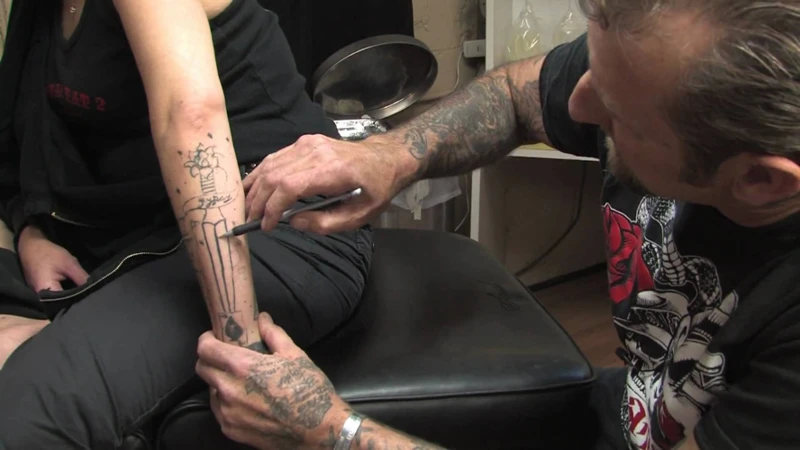
1. A tattoo machine is a hand-held device used to create a tattoo, consisting of a set of needles attached to a bar that moves up and down to puncture the skin.
2. The design is created by repeatedly puncturing the skin with the needles to insert the tattoo pigment.
3. The tattoo machine has been around since the late 1800s, when it was invented by Thomas Edison.
4. Tattoo machines come in two main types: coil machines and rotary machines.
5. Coil machines are the most common type of tattoo machine and use an electromagnet to move the needle up and down.
6. Rotary machines use a motor to move the needle up and down instead of an electromagnet.
7. Most machines are powered by a battery or a wall plug, and can be adjusted to create different effects depending on the type of tattoo being applied.
8. Tattoo machines are available in a variety of sizes and styles, and can be used to create both permanent and temporary tattoos.
Inks
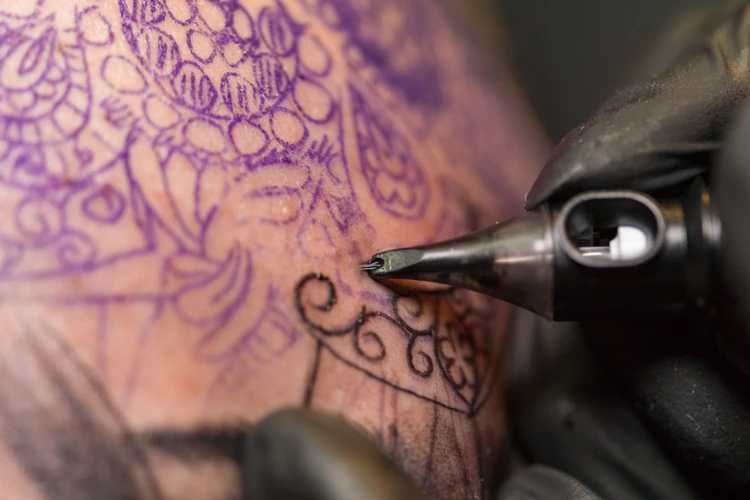
Choosing the right inks is a crucial step in creating a successful tattoo. Beginner tattoo artists should pay close attention to the type of ink they choose as different inks have different properties:
- Pigment-based inks are the most common type of ink used in tattoos and are known for their vibrant colors and reliable results.
- Organic inks are made from organic materials, such as plant extracts and minerals, and are often used for small and intricate tattoos.
- Vegan inks are animal-free and are usually made from natural ingredients, such as vegetables and fruit.
- Glow-in-the-dark inks are made from a combination of phosphors, which react to UV light, and are great for creating unique tattoos.
It is important to research the different types of inks and the ingredients they contain before making a purchase. Additionally, it is important to purchase inks from a reputable supplier to ensure the inks are safe to use.
Stencils
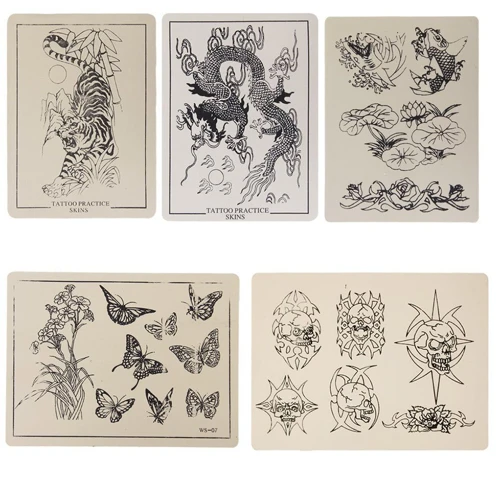
- Stencils are used by tattoo artists to make a template of the tattoo design. This helps to ensure that the tattoo is accurate and consistent.
- Stencils are transferable and can be easily removed from the skin, allowing you to practice on different parts of the body.
- Stencils are useful for practicing a variety of tattooing techniques such as shading, line work, and outlining.
- Using stencils is a great way to practice tattooing without permanently inking someone else’s skin.
- Stencils provide a great way for tattoo artists to practice their skills in a safe and controlled environment.
- Stencils can help you perfect the lines, shading and other details of a tattoo before you permanently ink someone.
Tattoo Needles
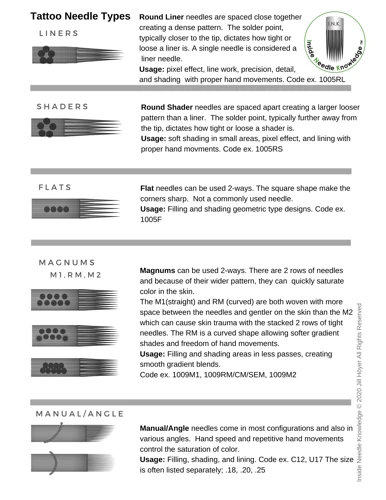
When it comes to practicing tattoos, using the right type of needles is paramount. Tattoo needles come in a variety of shapes, sizes and configurations to match the desired effect and area of application. The two most commonly used are round and magnum needles. Round needles are best for line work, as they provide a consistent, fine line. Magnum needles, on the other hand, are used to fill in larger areas with a thicker pigment. Depending on the desired look, artists may also use multi-point needles, curved needles, flat needles or even a combination of different shapes.
| Type of Needle | Application |
|---|---|
| Round Needles | Line Work |
| Magnum Needles | Filling in larger areas |
| Multi-point Needles | Shading and textures |
| Curved Needles | Curves and swirls |
| Flat Needles | Smooth color blending |
For beginner practitioners, it is important to understand the different types of needles and what they are used for. Practicing with a variety of needles can help better equip artists with the skills they need to create professional-looking tattoos.
Practice Tattoo Techniques
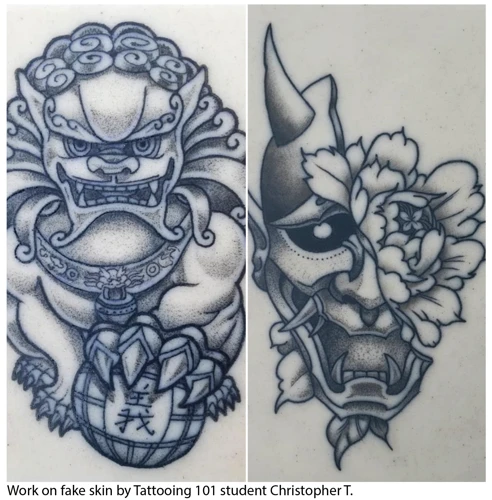
Practicing tattoo techniques is essential for any beginner tattoo artist. Before tattooing on clients, it is important to perfect your skills by practicing on various surfaces. Here are some tips for beginner tattoo artists on what to practice tattoos on:
- Fruit & Vegetables: Fruits and vegetables such as apples, oranges, and potatoes are a great way to practice tattooing. They are cheap and easy to find, and provide a soft, fleshy surface to practice on. Plus, if you make a mistake, it will only be temporary.
- Synthetic Skin: Synthetic skin is a great, realistic surface for practicing tattoos. It is designed to feel and act similarly to human skin, making it an ideal surface for improving your tattooing skills. You can purchase synthetic skin from most tattoo supply stores.
- Pig Skin: Pig skin is another great option for practicing tattooing. It is not as realistic as synthetic skin, but it provides a more forgiving surface for practicing. It is important to note that pig skin is not as widely available as synthetic skin, so you may have to do some searching to find a supplier.
- Tattoo Practice Skin: This is a great solution for practicing tattoos. It comes in a variety of shapes and sizes and can be purchased from most tattoo supply stores. It is designed to be used with a tattoo machine, and provides a realistic surface for practicing your tattooing skills.
Practicing tattoos on the right surfaces is essential for any beginner tattoo artist. Be sure to practice on the materials mentioned above to perfect your skills before tattooing on clients.
Outlines
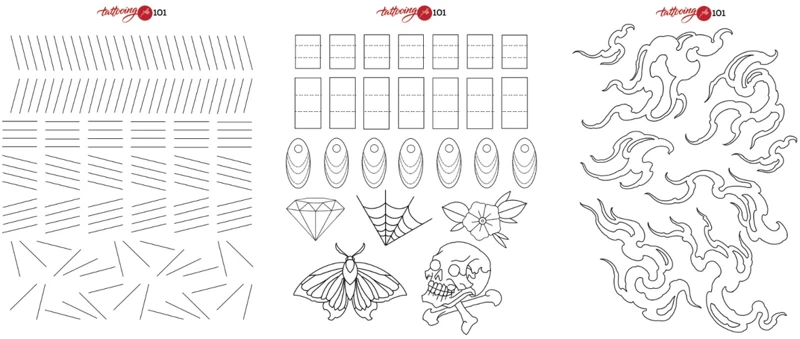
- Paper – Paper is an inexpensive and easy way to practice tattooing. Use a thin-tipped pen, pencil, or marker to draw outlines and basic shapes. To get a feel for shading, use different types of paper, such as tracing paper, watercolor paper, or Bristol board.
- Fruit – Fruits such as apples, oranges, and lemons are great to practice on. Use a needle to draw the outlines, and use a thin-tipped pen or marker to draw the design. You can use different types of fruits to practice different techniques, such as shading and color blending.
- Synthetic Skin – Synthetic skin is the best option when it comes to practicing tattoos. It looks and feels like real skin and can be used to practice all techniques. You can buy synthetic skin online or at a local tattoo shop.
Shading
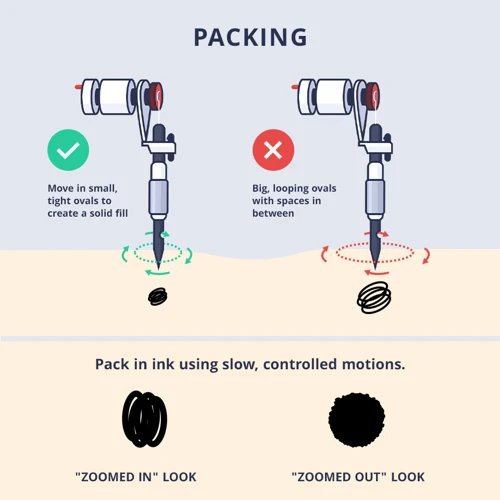
Practicing shading is one of the most important steps for beginner tattoo artists. As it requires a high level of accuracy and precision, it is important to practice on surfaces that will provide a similar feel to skin. Beginner tattoo artists can use practice skins specifically made for tattooing, or practice on oranges, as their skin is similar to human skin and reacts to the needle the same way. Practice skins come in a variety of shapes and sizes and are often used for practicing different techniques and styles. Tattoo artists can also practice on their own bodies, as long as they take necessary safety precautions. Tattoo artists should concentrate on one area at a time and start with small lines and shapes before gradually increasing the size and complexity. It is important to be patient and practice the same area until it is mastered, as shading is an important part of any tattoo.
Coloring
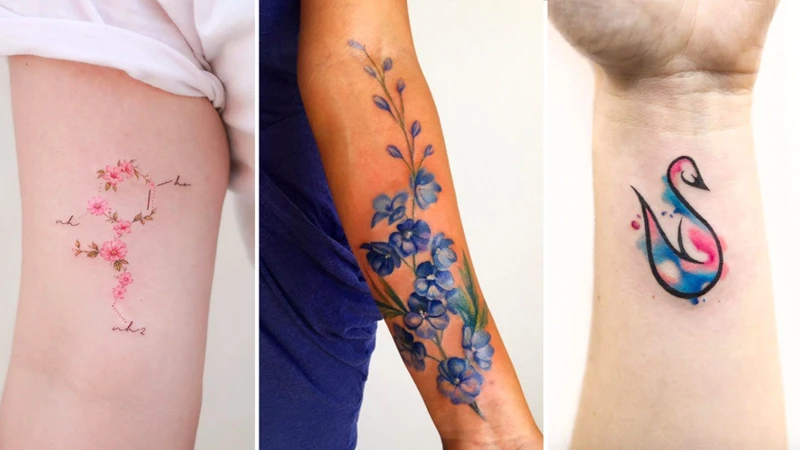
Before attempting to tattoo on skin, it is important to practice coloring. Coloring is one of the most fundamental aspects of tattooing and is essential to creating a successful tattoo. Beginner tattoo artists should practice coloring on a variety of surfaces such as plastic, leather, and paper to gain a better understanding of how pigments interact with different surfaces. It is also important to practice on different sizes and shapes of tattoos. This will help you to understand how to blend colors and create a smooth gradient. Additionally, you can use various techniques such as dotting and shading to practice coloring.
Practicing coloring on fake skin is another way to gain experience with tattooing pigments. Fake skin is a type of synthetic material that mimics the look and feel of human skin. It’s available in a variety of sizes and shapes, making it an ideal practice surface for tattoo artists. Fake skin also allows the artist to practice different coloring techniques such as blending, shading, and outlining.
| Surface | Advantages |
|---|---|
| Plastic | Allows for quick and easy cleaning between colors |
| Leather | Great for practicing lining and shading |
| Paper | Ideal surface for practicing outlining and dotting |
| Fake Skin | Provides a realistic surface for practicing coloring techniques |
No matter what you practice tattooing on, it is important to remember to use professional-grade materials and tools, and practice in a clean and sterile environment. With the right tools and practice, you can become a successful tattoo artist.
Blending

Blending is an essential skill to practice when you are a beginner tattoo artist. Blending is the technique of seamlessly transitioning between colors and shades of ink to create a smooth, realistic look. Blending will help you create tattoos that look professional, and will ensure that your tattoos don’t have any harsh lines or color shifts. You can practice blending on artificial skin, oranges, and other fruits. Be sure to practice blending on different surfaces to get a feel for how the ink will move and behave. Blending is also important for creating tattoos that look realistic, so you should practice blending on different parts of the body, such as the back, neck, shoulder, etc.
Safety & Hygiene Practices
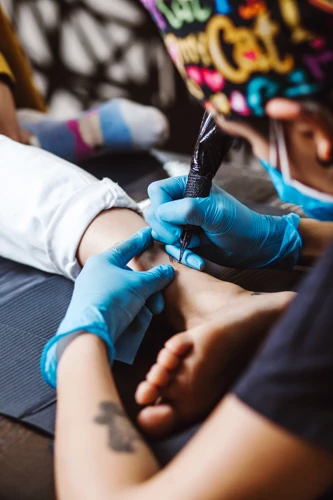
Practicing tattoos safely and hygienically is essential for any beginner tattoo artist. It is important to ensure that all safety and hygiene practices are followed when preparing for and during the tattooing process. This includes things like sterilizing all equipment, wearing protective clothing and gloves, and following sanitary guidelines.
Sterilizing Equipment
Sterilizing or sanitizing all of the equipment used for the tattoo is essential for a hygienic process. This includes the tattoo machine, needles, and any other tools. Sterilizing the equipment will help to prevent the spread of any infections or diseases. It is best to use sterilizing solutions that are specifically designed for tattooing.
Protective Clothing and Gloves
Wearing protective clothing and gloves is essential when practicing tattoos. This will help to protect the tattoo artist from any infectious materials that could be present on the skin. It is also important to wear a face mask to prevent any airborne particles from entering the mouth or nose.
Sanitary Guidelines
Sanitary guidelines should be followed when practicing tattoos. These include maintaining a clean and hygienic workspace and using single-use materials. It is also important to properly dispose of any used materials and to disinfect the work area after each tattoo.
| Practice | Hygiene Practices |
|---|---|
| Sterilizing Equipment | Sterilizing or sanitizing all of the equipment used for the tattoo is essential for a hygienic process. |
| Protective Clothing and Gloves | Wearing protective clothing and gloves is essential when practicing tattoos. |
| Sanitary Guidelines | Sanitary guidelines should be followed when practicing tattoos. |
Safety and hygiene practices should always be taken seriously when practicing tattoos. Following these guidelines will help to ensure a safe and hygienic tattooing experience for both the artist and the client.
Cleaning
- Proper cleaning is crucial for a safe tattooing practice. Before beginning to tattoo, it is essential to thoroughly clean the area with a sterile solution and to wear gloves.
- Tattooists should also clean their hands and the area to be tattooed with an antiseptic solution such as rubbing alcohol or Betadine, to decrease the risk of infection.
- Tattooists should also use a single-use, disposable needle and a separate single-use, disposable tube for each tattoo.
- Tattooists should also sanitize the entire area before and after tattooing, including the chair, station, and their hands.
- All supplies, such as needles and tubes, should be disposed of in an appropriate waste container.
Sterilizing
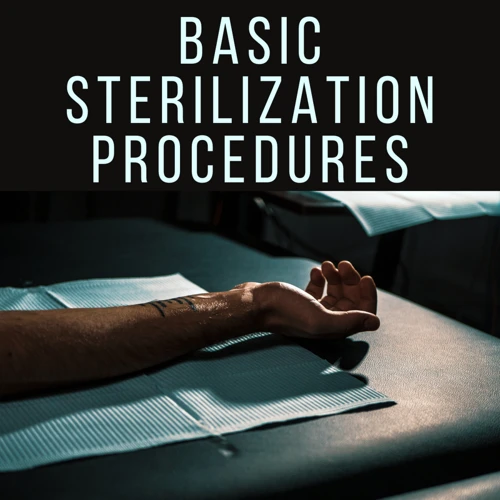
Sterilization is one of the most important parts of the tattoo process.
- It is essential to use sterilized equipment and practice on clean surfaces.
- Be sure to wear latex or nitrile gloves and sanitize hands before beginning.
- Clean the area to be tattooed with an antibacterial soap and warm water.
- Dispose of all needles and other equipment used for the practice tattoo after each use.
- If you are practicing on a living person, use a fresh set of needles and a fresh tattoo machine for each session.
Remember, a tattoo is a permanent mark, and it is important to be safe and practice good hygiene to avoid any infections or other complications.
Disinfecting
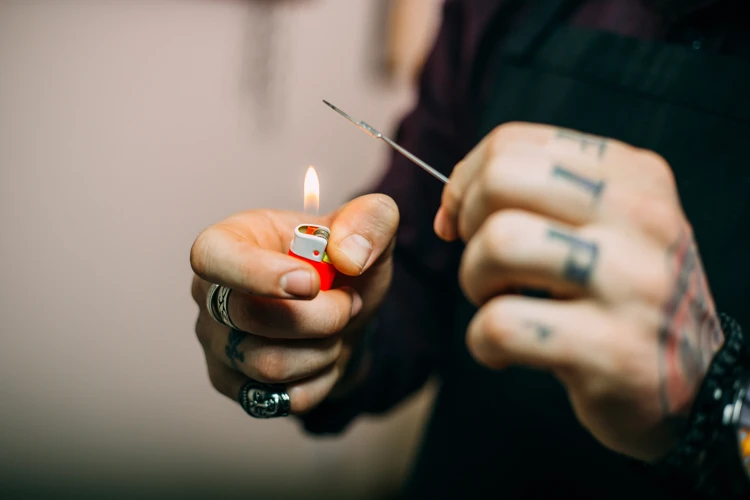
- Ensure all materials used in the tattoo are sterilized properly.
- Use an autoclave or single-use disposable needles, tubes and other items.
- Clean the surface of the skin with an antiseptic before applying the ink.
- Disinfect the area with a medical-grade disinfectant.
- Wash hands with soap and water before and after tattooing.
- Cover the tattoo area with a sterile bandage after the procedure.
Being a beginner tattoo artist, it is imperative to practice proper disinfection techniques to help prevent the spread of infections. To do this, it is important to use only sterile materials, clean the skin with an antiseptic, and disinfect the area with a medical-grade disinfectant. Additionally, it is important to wash hands with soap and water before and after tattooing, and to cover the tattoo area with a sterile bandage after the procedure is completed. These steps are essential in order to provide the best possible experience and to ensure the safety of both the artist and the customer.
Practice Tattoo Design Ideas
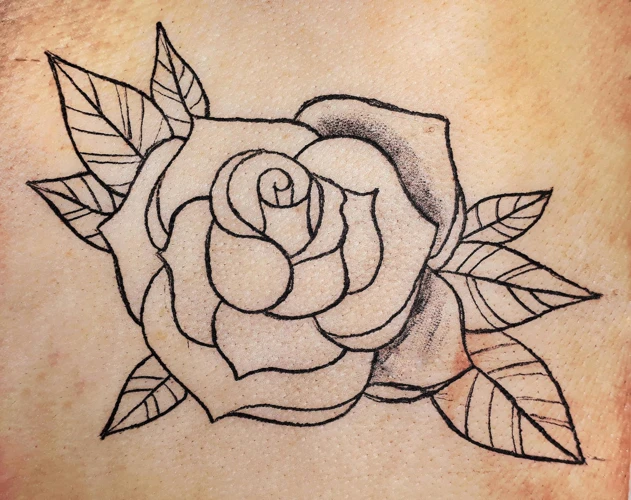
Drawing: Start with basic shapes, such as circles, triangles, and squares. Practice creating different lines, curves, and textures. As you become more confident, move onto more complex designs and illustrations.
Stencils: You can buy or create your own stencils to practice tattooing on paper. This will help you to develop the skills needed to accurately transfer your designs onto the skin.
Fruit and Vegetables: Fruits and vegetables are often used for practice tattoos. This can help you practice the technique of using the needle and the way it feels when you are inking.
Synthetic Skin: Synthetic skin is a great way to practice tattooing. It will give you a realistic feel for how it will feel to tattoo a real person.
Artificial Leather: Artificial leather is another great way to practice tattoos. This material is easy to work with and will help you develop your skills.
Clay or Wax: Clay or wax can be used to practice tattooing on. This is a good way to practice shading and creating depth in your tattoos.
Plastic: You can also use plastic to practice tattooing. Plastic is a great material to use because it is easy to work with and will help you improve your technique.
Simple Tattoo Ideas
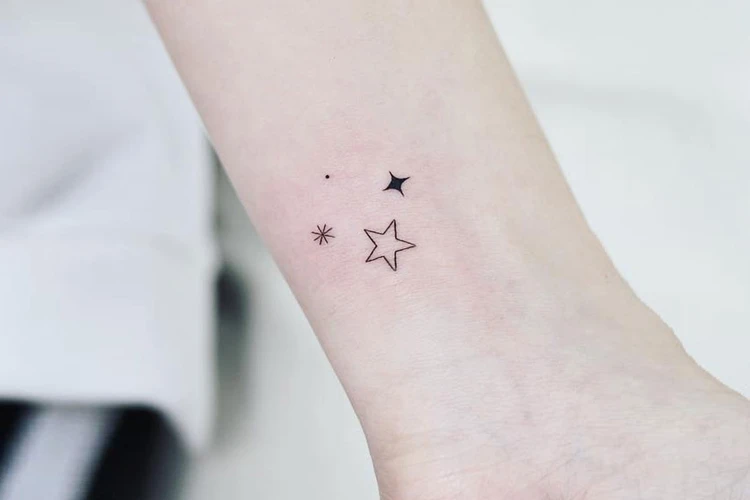
- Simple tattoos are ideal practice pieces for beginner tattoo artists, as they require less time, effort, and skill.
- Small, simple tattoos can be done using basic tattooing equipment, such as needles and inks.
- Tattooing practice pieces can be anything from basic shapes and letters to simple animals and objects.
- Practice pieces should be done on synthetic skin, rubber, or other inanimate objects, as opposed to real skin.
- Practicing on inanimate objects will allow tattoo artists to try out different techniques and get comfortable with the equipment.
- Before practicing on real skin, it is important to get comfortable with the equipment and techniques.
- Simple tattoo ideas can be found online, in tattoo magazines, or in tattoo parlors.
Colorful Tattoo Ideas
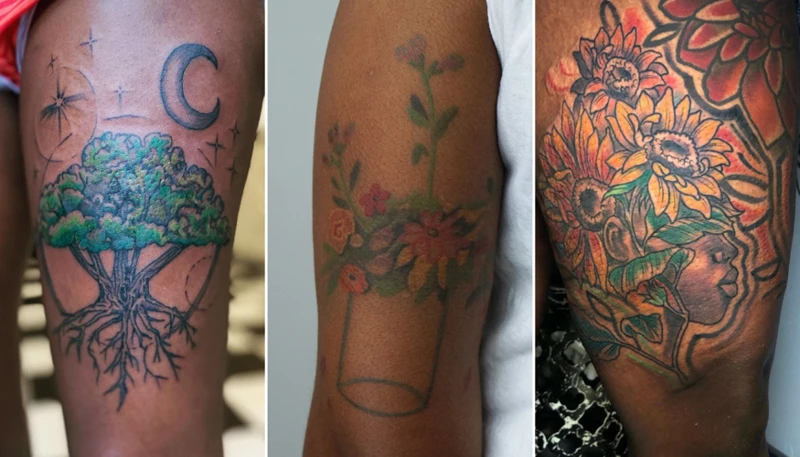
Practicing with color is one of the best ways to sharpen the skills needed to create beautiful tattoos. Tattoo artists can experiment with different inks and techniques to bring their art to life. Colored tattoos are a great way to get creative and practice what you know. Here are some ideas for colorful tattoos to practice on:
Flower designs: Flowers make for great colorful tattoos. From smaller daisies and roses to large bold sunflowers, there are plenty of options for tattoo artists to practice their skills.
Abstract art: Abstract art can be a great way to experiment with color and texture. Create unique patterns with bright colors and use different techniques to give the tattoo an interesting look.
Animal art: Animals can be a great way to practice with color. From detailed feathers and fur to bright eyes, you can use a variety of colors and techniques to create a beautiful piece.
Geometric shapes: Geometric shapes can be used to create a bold and vibrant tattoo. Use a variety of colors and textures to create a unique and eye-catching design.
Symbols and letters: Symbols and letters are a great way to practice with color. Use bright colors to create a vivid tattoo and add interesting textures to make the design stand out.
Portraits: Portraits can be a great way to practice with color. Create a beautiful and realistic tattoo by using a variety of colors and techniques.
These are just a few ideas for colorful tattoos to practice on. With the right inks and techniques, you can create beautiful tattoos that show off your skills as a tattoo artist.
Geometric Tattoo Ideas
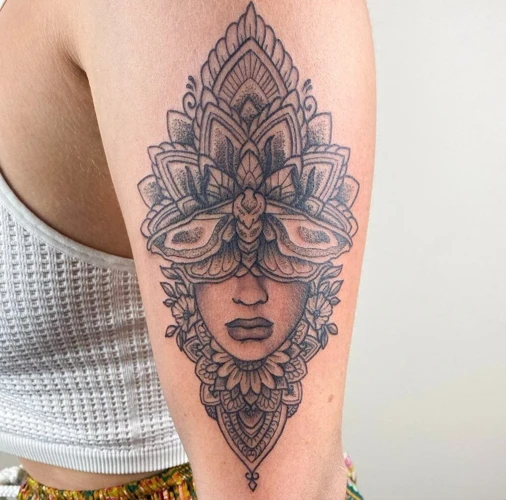
Paper: Practicing on paper is a great way to get used to the feel of a tattoo machine and perfecting your line work. It also allows you to practice different shapes and sizes of your designs before you put them on skin.
Fruits and Vegetables: Fruits and vegetables are ideal for practicing on as they provide a realistic texture and have a greater thickness than paper. The skin of a banana or a potato allows for an accurate representation of what the needle penetration will be like on human skin.
Pig Skin: Pig skin is another great option for practicing tattooing. It is not only an affordable option but it also provides a realistic texture and thickness that is most similar to human skin.
Synthetic Skin: Synthetic skin is a great option for practicing geometric tattoo designs. It is a synthetic material that is designed to look and feel like real skin. It is also durable and won’t puncture or tear easily, making it great for practicing intricate line work and shading.
Silicone Skin: Silicone skin is another great option for practicing geometric tattoos. It is a softer material that is less realistic than synthetic skin but still provides a realistic texture. This material is more resistant to punctures and tears, making it ideal for tattoos that require a lot of detail.
Practice Tattoo Placement

For beginners, it is important to practice tattoo placement in order to gain accuracy and consistency in tattooing. Here are some tips to help you get started:
- Practice on yourself: Use a non-permanent marker to practice your placement on your own skin. This is a great way to get used to the sensation of tattooing, and to familiarize yourself with your equipment.
- Practice on artificial skin: Artificial skin is often used to simulate real skin and is a great way to practice your placement before tattooing on a real body. It is important to get the right kind of artificial skin that resembles real skin and is made for tattooing.
- Practice on a friend or family member: If you are comfortable tattooing on someone else, you can practice on a friend or family member. Make sure to get their consent first, and to explain the risks involved. Additionally, use a non-permanent marker to practice your placement before using a tattoo machine.
- Practice on a stuffed animal: If you do not feel comfortable tattooing a friend or family member, you can practice your placement on a stuffed animal. Use the same non-permanent marker that you would use to practice on yourself.
No matter what you choose to practice on, it is important to take your time and get comfortable with the placement and technique before tattooing on a real body. With practice, you will become more confident and accurate with your tattoo placement.
Arm
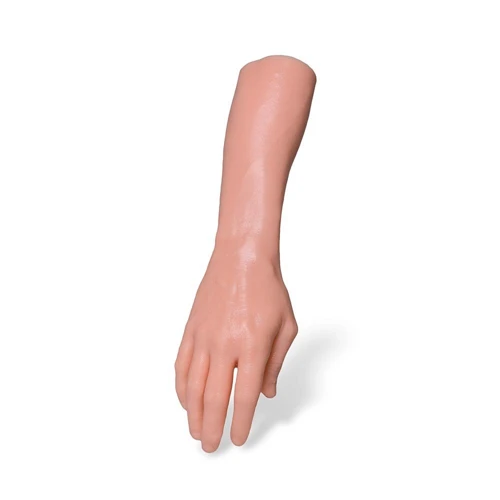
Tattooing on an arm is a great way to practice and perfect your tattooing skills as a beginner tattoo artist. The arm is a large, flat surface that is ideal for tattooing and allows you to practice a wide variety of techniques such as shading, outlining, and color mixing. The arms of a person can also be a great canvas for making large and intricate designs, as the arm allows plenty of room for intricate details. Additionally, the arm is an easily accessible part of the body for a beginner tattoo artist to practice on, because it is not a sensitive area.
When practicing on an arm, it is important to take extra care to ensure the tattoo is done correctly. This includes using the appropriate equipment, sterilizing the area before and after the tattoo, and using proper technique and care when tattooing. It is also important to make sure that the person receiving the tattoo is comfortable and that the area is properly prepared.
| Pros | Cons |
|---|---|
| Large, flat surface | Not a sensitive area |
| Allow room for intricate details | Easily accessible |
When practicing tattoos on an arm, it is important to keep in mind the safety of the person receiving the tattoo. Always use proper equipment and sterilization techniques, and take extra care to make sure the area is properly prepared. Additionally, it is important to practice good technique and take the time to perfect your skills before attempting to tattoo on a living person.
Legs
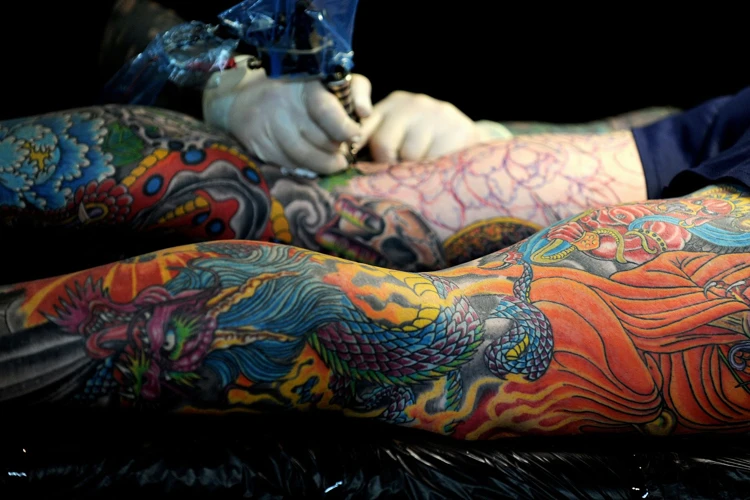
Tattooing legs is a great way for beginner tattoo artists to practice their craft. The thighs and calves provide a large, flat canvas for practicing various techniques. Many artists also use their own legs to practice tattooing. This allows them to get comfortable with the tools and techniques, as well as getting used to the feeling of being tattooed.
When practicing on your own legs, it is important to make sure you use the correct safety precautions. Tattooing your legs can be a bit uncomfortable, so it is important to use a topical anesthetic cream or gel to minimize pain and discomfort. It is also a good idea to use a barrier film between your skin and the tattoo machine to reduce the risk of infection.
When practicing on someone else’s legs, it is important to make sure that the skin is clean and free of any debris. It is also important to use the correct safety precautions and to use an appropriate size needle for the area being tattooed.
| Advantages | Disadvantages |
|---|---|
| Large canvas for practicing various techniques | Can be uncomfortable if not using proper safety precautions |
| Can use own legs to get comfortable with tools and techniques | Need to use appropriate size needle for area being tattooed |
Overall, legs are a great place for beginner tattoo artists to practice their craft. With the right safety precautions, it can be a great way to hone your skills before tackling larger projects.
Back

- Fruits – Fruits such as apples or bananas are great for practicing basic tattooing skills such as shading, outlining, and color blending.
- Synthetic Skin – Synthetic skin has a very similar feel to real skin and is perfect for practicing more advanced tattooing techniques.
- Foam Blocks – Foam blocks are a great way to practice outlines and shading without the risk of tattooing someone.
- Pig Skin – Pig skin is often used by experienced tattoo artists for practicing complex techniques such as portrait work.
Practicing on your own body is not recommended, as it can lead to infection and other complications. It is also not recommended to practice on friends or family members without the proper training and safety measures in place.
Abdomen
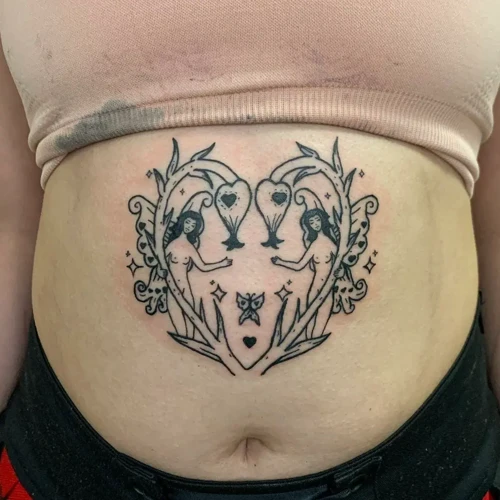
Practicing on the Abdomen
- The abdomen is a great place to practice tattooing due to its flat and uniform surface.
- The skin on the abdomen is generally thicker than other parts of the body, providing more resistance.
- It is also good to practice on because of its low-risk nature. The area is less likely to be exposed to the sun and water, making it safer to practice on.
- It is important to note that the skin on the abdomen is more sensitive than other parts of the body and may be more prone to pain.
- It is recommended to practice on the abdomen in small doses and build up to larger tattoos as you become more experienced.
Tips for Tattooing on the Abdomen
- Make sure to use a high-quality tattoo gun when practicing on the abdomen.
- Use a small needle size for practicing on the abdomen. Smaller needles will be easier to control and will reduce the chances of causing excessive pain or bleeding.
- Always use sterile equipment and practice proper sanitation techniques when tattooing on the abdomen.
- Make sure to use a light touch when tattooing on the abdomen. Too much pressure can cause excessive pain and bleeding.
- Be sure to use a light-colored ink when practicing on the abdomen. Darker inks can be more difficult to work with and can cause more pain.
Conclusion
Practicing on the abdomen is a great way for beginner tattoo artists to hone their skills. With its flat and uniform surface, the abdomen provides a great canvas for tattooing. However, it is important to be mindful of the sensitivity of the skin on the abdomen and always practice proper sanitation techniques. By following these tips, beginner tattoo artists can safely and effectively practice their skills on the abdomen.
Resources for Beginner Tattoo Artists
1. Artificial Skin: Artificial skin, also known as practice skin or synthetic skin, is designed to closely mimic human skin and is perfect for learning and practicing tattooing skills. Artificial skin comes in sheets and can be purchased online or at tattoo supply stores.
2. Pig Skin: Although it’s not as realistic as artificial skin, pig skin is another option for practicing tattoos. Pig skin is thicker than human skin, so be sure to practice on thinner skin first before moving onto pig skin.
3. Fruit and Vegetables: Carrots, apples, and other fruits and vegetables make an excellent and affordable choice for learning to tattoo. If you’re using fruit or vegetables for practice, make sure to choose one with a thick skin and a firm texture.
4. Faux Leather: Faux leather is easy to find and a good alternative for practicing tattoos. It’s not as realistic as skin, but it’s a great material for tattooing and can be used to practice drawing and shading techniques.
5. Tattoo Dolls: Tattoo dolls are specifically designed for practicing tattoos. They’re made of high-quality plastic and are a great way to practice your skills without worrying about hurting someone.
6. Your Own Skin: If you’re feeling brave, you can even practice on your own skin. Just make sure to use a sterile needle and practice on a small area of your body first.
Frequently Asked Questions
What Materials Should I Use When Practicing Tattoos?
Artificial Skin: This is the most recommended material for practicing tattoos. It is designed to simulate real skin and provides an opportunity to practice different techniques in a safe and controlled environment.
Fruit/Vegetables: Another great material for practicing tattoos is fruit or vegetables. The benefit of this is that it is cheap, easily available and provides a unique canvas to practice on.
Pig Skin: Pig skin is another popular material for practicing tattoos. This option is great for experienced tattoo artists who want to practice shading and other more advanced techniques.
Synthetic Skin: Synthetic skin is a great option for beginners who want to practice the basics. It is also quite affordable and easy to obtain.
Leather/Fabric: Leather and fabric are good materials for practicing line work and shading. They provide a unique texture that helps to simulate real skin.
What are the Best Techniques for Practicing Tattoos?
1. Practice on Fruit – Fresh fruit is a great way to practice skin depth, color, and consistency when it comes to tattoo needles. Using a variety of fruits like avocados, limes, and apples will help you learn how to properly control your needle and practice basic tattoo techniques.
2. Use Practice Skins – Practice skins are great for getting used to the feel of tattooing and perfecting your line work. Most practice skins are designed to feel like human skin and come in a variety of textures, allowing you to practice shading, color blending, and other techniques.
3. Invest in a Tattoo Machine – Investing in a tattoo machine is essential for practicing the basics of tattooing. It may be a bit of a financial investment, but it will be worth it in the end. You will be able to learn the basic mechanics of the machine, as well as how to properly use the needles and ink.
4. Practice on Yourself – Once you’ve become comfortable with the basics and are confident in your technique, you can start practicing on yourself. Be sure to use a sterile needle and practice on areas of the body that are not easily visible.
5. Practice on Friends and Family Members – Once you’ve become comfortable with tattooing on yourself, you can start practicing on your friends and family members. Be sure to follow all safety protocols, such as wearing gloves and keeping your work area clean.
Is it Safe to Practice Tattoos on My Own Skin?
No. It is never safe or recommended to practice tattoos on your own skin. Tattooing yourself can lead to serious risks of infection, scarring, and other potential medical issues. Additionally, a tattoo artist must be trained in proper tattooing techniques and have a thorough understanding of the anatomy of the skin and the potential dangers of tattooing.
- Infection: Unsterilized tools and improper technique can cause bacterial infections, skin infections, and even blood-borne diseases such as hepatitis and HIV.
- Scarring: Incorrectly done tattoos can cause permanent scarring, skin discoloration, and other skin damage.
- Allergies: Tattoo ink contains a variety of chemicals that can cause allergic reactions.
- Pain: Tattooing your own skin can be painful and difficult to do without professional guidance and equipment.
Given the potential risks, it is best to practice tattooing on artificial skin before attempting it on yourself or anyone else. Synthetic skin, such as practice skin, will allow you to practice the same techniques and designs you would use on real skin without the risk of infection or other harm. Additionally, some companies sell inks that wash off easily and can be used for practice tattooing.
Should I Practice with a Tattoo Machine or with a Needle?
When starting out as a tattoo artist, it is important to practice the techniques of tattooing. While the traditional method of tattooing requires the use of a needle, modern tattoo machines have become increasingly popular. Both have their advantages and disadvantages, so it is important to consider which is best for the individual artist.
Tattoo Machines are the preferred option for many professional artists as they offer a more consistent, precise result. They also allow for a wider variety of techniques, such as shading and color mixing. However, they require more technical knowledge than using a needle and are more expensive to purchase.
Needles offer a more traditional approach to tattooing and can be used to achieve a hand-crafted look. It is also a cheaper option and requires less technical knowledge. However, needles require more skill and experience to achieve a consistent result, so it is important to practice with them to gain this experience.
Ultimately, the choice of which to practice with depends on the individual artist. It is important to consider the advantages and disadvantages of both and decide which is best for their skill level and desired outcome.
How can I find a mentor to help me practice tattoos?
- Ask Fellow Tattoo Artists: Reach out to your local tattoo community and ask if any experienced tattoo artists would be willing to mentor you. Many experienced artists are more than happy to help out aspiring tattoo artists.
- Look for Classes or Workshops: Many experienced tattoo artists offer classes and workshops to help beginners learn the basics of tattooing. This is a great way to learn the fundamentals and get practice with a mentor.
- Attend Tattoo Conventions: Tattoo conventions are a great way to meet and network with experienced tattoo artists. These conventions are often filled with workshops and classes, so you can get hands-on experience with a mentor.
- Join a Tattoo Forum: Online forums are a great way to connect with experienced tattoo artists who can provide advice and guidance. You can ask for tips and advice or even ask for a mentor.
Conclusion
Practicing tattoos is an important step for beginner tattoo artists to hone their skills. Tattoo practice skin is the best option for practicing tattoos, but other materials such as paper, fruit and vegetable skins, and pig skin can also be used. It is important to use the appropriate needle and ink when practicing to ensure a successful tattoo. With the right materials and techniques, beginner tattoo artists can improve their craft and become confident and successful tattoo artists.